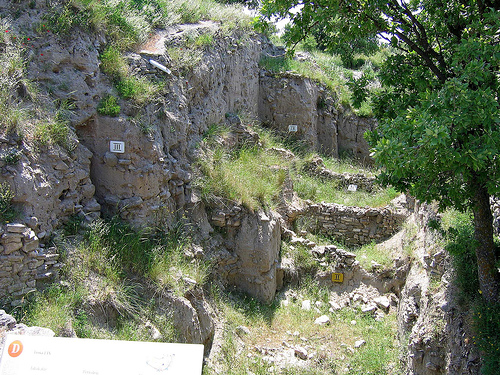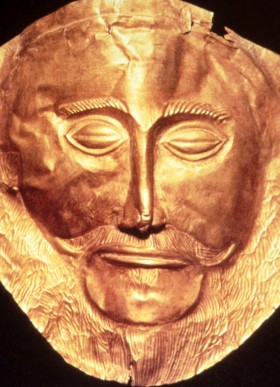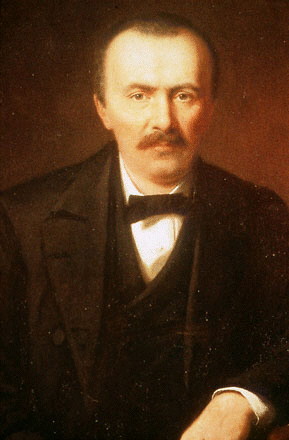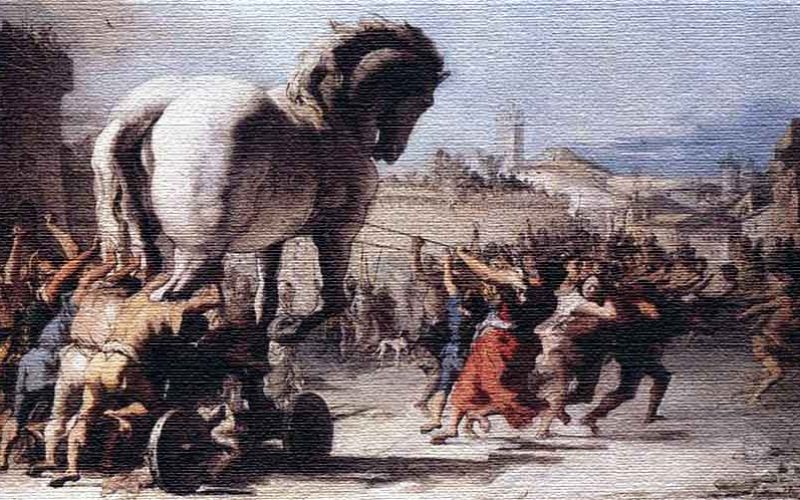Heinrich Schliemann—discoverer of Homer’s Troy, self-taught polyglot, self-made man.
Admirable accomplishments.
But at the end of Part 1, I dropped a rather unsavory tidbit about him.
Once Schliemann amassed his fortune, he abandoned his wife, journeyed to Greece, and married the teenage Sophia so he could have a Greek companion in his search for Troy. I never uncovered his first wife’s fate.
In his memoirs, Schliemann claims to have dined President Millard Fillmore. No record of the meeting exists. He published an “eye witness” account of the 1851 San Francisco fire. He was in Sacramento at the time. And he did a runner after the Rothschild’s agent accused him of shorting gold dust consignments.
Heinrich Schliemann had issues.

The Not-So-Straight Story
People lived at Hisarlik—ancient Troy—for over 3000 years. They built on top of each other until Hisarlik became a mountain. It’s mind-boggling. Today, archaeologists identify nine major settlements.
In 1871, Schliemann started excavations there. He instructed laborers to bisect the mound until they hit the earliest habitation level, assuming it would be Homer’s Troy.
He was wrong. Schliemann overshot Homer’s Troy by over 1000 years and destroyed much of it on the way down.
One day in May, 1873, a glint of metal caught his eye. He wrote,
I immediately had “paidos” (lunch break) called.…While the men were eating and resting, I cut out the Treasure with a large knife….It would, however, have been impossible for me to have removed the Treasure without the help of my dear wife, who stood by me ready to pack the things which I cut out in her shawl and to carry them away.
Schliemann later admitted Sophia was in Athens at her father’s funeral when he found the treasure. He smuggled it into Germany, but couldn’t resist taking a publicity shot (above) of Sophia wearing it. Ottoman officials saw the photo, revoked Schliemann’s dig license, and sued him for Turkey’s share of the gold.

In 1876, the Greek government gave Schliemann permission to excavate at Mycenae, about 90 km southwest of Athens. The site was famous, but hadn’t been studied. After his Turkish adventure, the Greek Archaeological Society assigned an agent to monitor him.
Schliemann consulted the Classical texts again. Pausanias the geographer wrote that the Mycenaeans buried their kings “inside the walls.” Most scholars thought he meant the larger walls around the main tomb. Schliemann thought otherwise. He dug inside the city walls near the Lion Gate.
He discovered five rectangular shaft graves. The first contained the remains of nineteen adults and two infants covered in gold.
In the third and fourth graves, Schliemann found five warriors buried with golden death masks. One mask far outshone the others.
“I have looked upon the face of Agamemnon!” he supposedly exclaimed. But again, he miscalculated. The graves were much older.
The Man Behind Agamemnon’s Mask
Controversy still surrounds the Mask of Agamemnon. It doesn’t resemble the other four, which look crude and almost featureless. “Agamemnon” has noble features and a handlebar moustache, popular in 19th c. Europe, but not in ancient Greece.

Many archaeologists consider it a fake. The Greek government won’t allow testing. Art historian Kenneth Lapatin, however, thinks it might be a “pastiche.” He points out,
The shaft grave material had to be extracted from the mud, cleaned, and returned to its “original” form. Attitudes towards “restoration” vary with time and place…Might the Mask of Agamemnon have been “restored” to what Schliemann, or perhaps even someone else, thought it should, or wanted it to look like?
A distinct possibility. I’m amazed, in fact, that no one has mentioned the obvious (especially in light of the Da Vinci self-portrait mystery) — except for the slender nose, the Mask of Agamemnon looks like Schliemann.
In truth, much of the evidence against Schliemann is open to interpretation. He divorced his wife and married a younger woman, but his wife had long grown weary of this Homeric obsession. His employed horrid excavation techniques, but archaeology had not yet standardized. He liked to embellish a story.
So did Homer.
No one disagrees that Schliemann was a shrewd businessman, a gifted self-taught linguist, and, in his 40s, the discoverer of Troy. Perhaps, at worst, he was obsessed and impatient.
I love this conclusion from Jason at Alpaca Suitcase:
Say what you will about him, but before Heinrich Schliemann the Trojan War was just a nice piece of fiction about some dudes fighting over a pretty girl.
What Later Bloomers can learn from Heinrich Schliemann:
Some shortcuts aren’t worth it. What is for you won’t go by you.
I’m curious. Do you think the Mask of Agamemnon resembles Schliemann?
